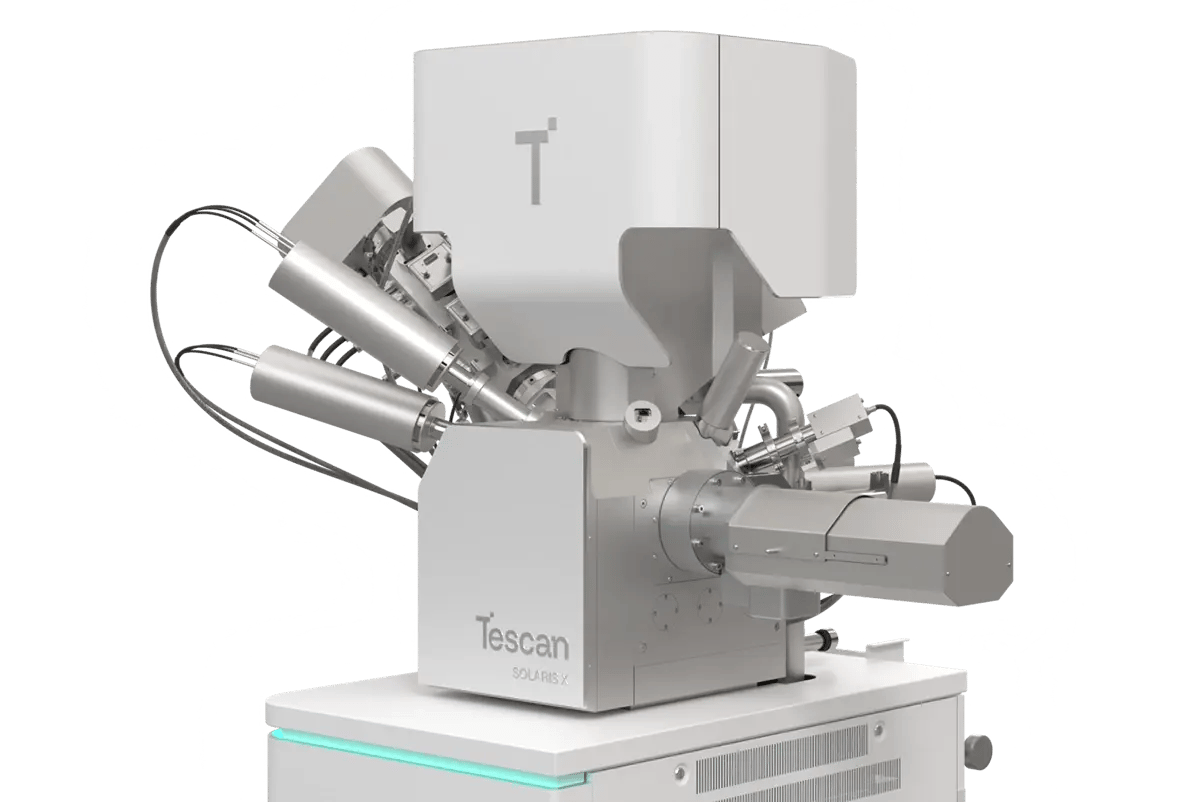1. Root of the Problem
Why Standard TEM Prep Workflows Fall Short on 7nm Node Devices
Preparing TEM lamella from 7nm logic structures requires nanometer-scale precision. But standard workflows — involving multiple systems and air breaks — often introduce contamination, misalignment, or structural damage. Reaching contact layers without overshooting is difficult, especially when endpointing lacks accuracy.
Transistor features at 7nm are deeply embedded and sensitive to ion damage. Even slight missteps during trenching or thinning can distort key regions or degrade imaging resolution.
Tescan SOLARIS X addresses these issues with a tightly integrated, application-specific workflow:
- In-situ delayering and thinning avoid air exposure
- Inverted geometry improves lamella stability
- SEM-based endpointing ensures targeting accuracy
- Xe⁺ plasma FIB prevents Ga contamination
- Final 1 keV polish maintains structural integrity
Achieve reliable, repeatable sub-20 nm lamella prep ready for high-resolution analysis using SOLARIS X.
2. Materials and Methods
How TEM Lamella Were Prepared from 7nm Devices Using Tescan SOLARIS X FIB-SEM
A 7nm FinFET device was selected to demonstrate integrated delayering and lamella preparation. The region of interest was identified using passive voltage contrast (PVC) and low-keV SEM imaging to accurately locate the contact and transistor layers.
Delayering was carried out using Xe⁺ plasma FIB with Nanoflat chemistry, enabling controlled removal of metal layers from M10 to contact. A protective Pt cap was deposited prior to trenching and thinning.
Lamella were lifted out in-situ using the OptiLift™ rotational nanomanipulator. Inverted geometry supported mechanical stability during thinning, with a final 1 keV FIB polish achieving ~16.5 nm thickness.
This process enables you to prepare high-quality, repeatable lamella for TEM analysis of transistor-level structures.
3. Results and Discussion
High-Resolution TEM Analysis of Contact and Transistor Features in 7nm Devices
Tescan SOLARIS X FIB-SEM enabled consistent preparation of sub-20 nm lamella from contact-layer and active transistor regions of a 7nm FinFET device. The use of inverted geometry, combined with low-kV final polishing, preserved the integrity of metal stacks, gate structures, and dielectric boundaries across the lamella.
TEM imaging revealed clean interfaces and low amorphization, supporting clear visualization of critical transistor features such as contact alignment, channel geometry, and gate-to-contact connectivity. Thinning precision allowed for structural assessment at the nanometer scale, even in densely packed device regions.
Contact-layer lamella showed well-defined metal transitions and minimal curtaining, while transistor cross-sections retained contrast across poly-Si gates and surrounding dielectrics. Cross-lamella validation confirmed thickness uniformity down to ~16.5 nm.
With this workflow, structural inspection, process verification, and localized defect analysis at the 7nm node become highly effective. This delivered the reproducibility and accuracy required for modern semiconductor engineering.



.png?width=1200&height=1200&name=1_Delayering%20of%207nm%20FinFET%20CPU%20using%20Nanoflat%20chemistry%20(1).png)




